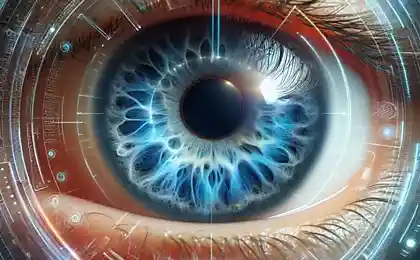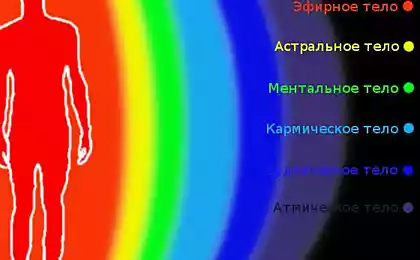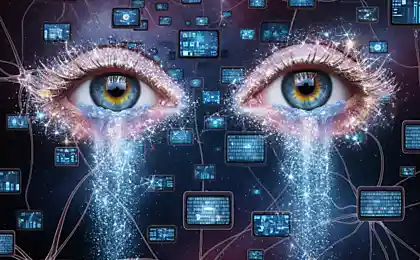618
As a blind person in one eye without damaging it
Little hitrost
In the early 1800s, a scientist named Charles Wheatstone discovered that the left and right eye see slightly differently, so that people have a perception of depth. He wondered what would happen if each eye will see completely different things.
Wheatstone suggested that the brain needs to "mix" both subjects, and to test the theory has created a sort of wedge - one eye with a wedge saw the face, and the other eye had seen the house. Wheatstone was sure that the man in this case, see the house, which has a face.

Instead, people are seen alternately the person's home, again the face and back home. Images are not mixed and alternated - the brain first took the information from one eye and then the other. Wheatstone named this phenomenon of binocular competition.
Since then, the basic setup of binocular competition has become the basis for a large number of experiments with perception. In one of these experiments revealed a phenomenon called continuous flash suppression - perhaps because "functional blinding anyone in one eye" has a direct relationship to this phenomenon.
If a person with one eye sees a continuous stream of bright blinking rectangles or other fast-moving images, and other eye - static or near-static image, the still image will be discarded by the brain.
It is not just the focus - the eye at this time literally blind. And, according to the experiments, to suppress a still image in this way can be a very long period of time. We, like the dinosaurs of "Jurassic Park", and sometimes can only see what is moving.
So if you want to dazzle the time someone in one eye, no mutilated with the person for life, or to stay a while Cyclops - you know what to do.
via factroom.ru

In the early 1800s, a scientist named Charles Wheatstone discovered that the left and right eye see slightly differently, so that people have a perception of depth. He wondered what would happen if each eye will see completely different things.
Wheatstone suggested that the brain needs to "mix" both subjects, and to test the theory has created a sort of wedge - one eye with a wedge saw the face, and the other eye had seen the house. Wheatstone was sure that the man in this case, see the house, which has a face.

Instead, people are seen alternately the person's home, again the face and back home. Images are not mixed and alternated - the brain first took the information from one eye and then the other. Wheatstone named this phenomenon of binocular competition.
Since then, the basic setup of binocular competition has become the basis for a large number of experiments with perception. In one of these experiments revealed a phenomenon called continuous flash suppression - perhaps because "functional blinding anyone in one eye" has a direct relationship to this phenomenon.
If a person with one eye sees a continuous stream of bright blinking rectangles or other fast-moving images, and other eye - static or near-static image, the still image will be discarded by the brain.
It is not just the focus - the eye at this time literally blind. And, according to the experiments, to suppress a still image in this way can be a very long period of time. We, like the dinosaurs of "Jurassic Park", and sometimes can only see what is moving.
So if you want to dazzle the time someone in one eye, no mutilated with the person for life, or to stay a while Cyclops - you know what to do.
via factroom.ru
How to use words to know whether a person is depressed
Elephants are able to recognize human voices and discern the voice of men and women























